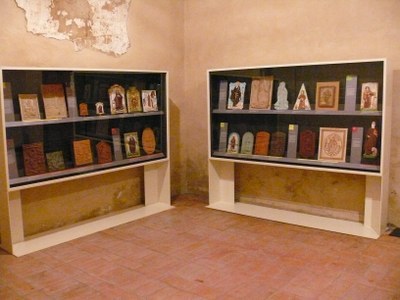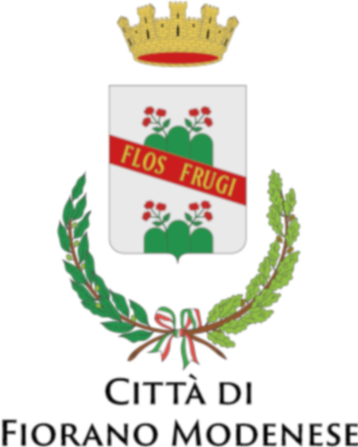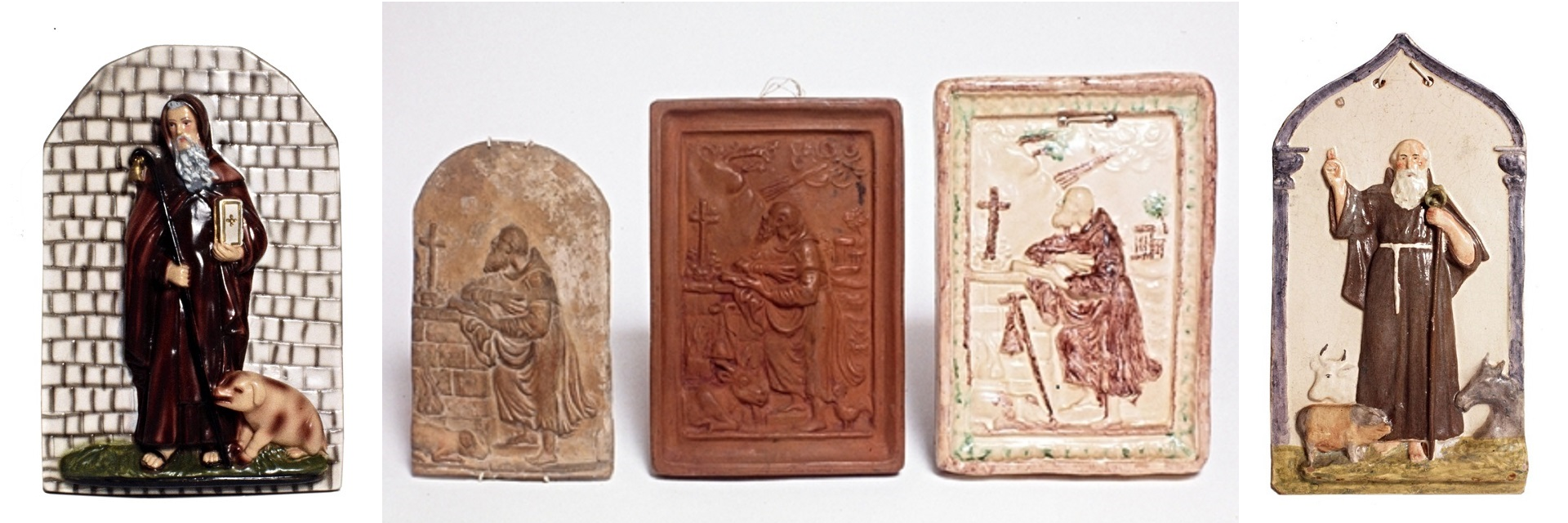The devotional ceramic plaques dedicated to Saint Anthony are testimony to the deep faith of the local populace. They are positioned on the walls and were believed to perform miracles, on the basis of a Pagan tradition. They are also present on the doors, in the corners of buildings, in the countryside on the front doors of houses, in stables, hay barns and on pillars or workshops, positioned at crossroads, in the so-called arboreal tabernacles.
Sant’Antonio Abate, a man of prayer, a hermit fighting his demons and a healer of the sick, is considered as the father of Christian monasticism and the patron saint of animals. In the XI century, his relics were taken to Vienne, in France, where a church was built to worship him. The sick flocked there and the Order of the Hospital Brothers of Saint Anthony was created there to care for them, to whom the Pope granted the privilege of breeding pigs, allowing them to use the lard to cure “St. Anthony’s fire”. This led to the association between pigs and the Hermit considered the protector of swine, pets, farm animals, country folk, breeders and butchers. The saint’s relationship with fire is the reason why he is considered the patron saint of this element and those who work with it, such as ceramic artists and fire-fighters.
The devotional plaques and the production techniques
In tile furnaces, ceramic plaques are usually produced in moments of creative escapism of the ‘firer’. They are almost always made of terracotta with reliefs, often coated, glazed and polychrome. On the oldest plaques, after forming of the silver mould, the object was coated and the coating was then painted and fired. Glazed or majolica terracotta started to appear in the XVIII century.
The plaque production centres
Between the XVII and XIX centuries, production in Emilia-Romagna originated in Bologna, Modena and Romagna. There is a long sculpting tradition in the city of Bologna, where artists specialised in plaster, papier-mâché, scagliola, wood and terracotta. The workshops of the master sculptors produced small devotional works, based on models of the best artists. Figures with vibrant twists and movements, sometimes perfectly draped.
Manufactured articles of Sassuolo. It was the workshop of Carlo Rubbiani that started the production of road signs, coating ceramics and mechanical production of decorations. Devotional plaques were produced by the factories of Sassuolo in a Neoclassic style, with two-colour speckle or sponge painted frames in green and yellow or blue and brown, like the bowls found in ancient country kitchens.
Production in Romagna. The manufacture of these plaques in Romagna is distinguished by a particular colour scheme and by a rich and varied interpretation of the frame: rectangular, tray-shaped, octagonal, marbled with bright colours, to offset the frontality of the central image. A large part of nineteenth century production in Romagna is attributable to the Bucci factory in Imola, which became the “Associazione Cooperativa Ceramica” in 1874.

Museum acknowledgements section
Section Project, Stefania Spaggiari – Museum of Ceramics, Fiorano Town Council
Set-up project, Abacus s.r.l. Sassuolo
Panel printing, Poligraph Fiorano Mod.se
Photographs Giacomo Martinez
Thanks are due to Raffaella Montecchi and Giorgio Olivieri, who donated the works
Melchiorre Gibellini, historical holy pictures
Info utili
Via del Castello, 12 (Spezzano) - 41042 Fiorano Modenese (MO)
Tel: +39 0536 833412; +39 0536 833438; +39 0536 073036
Email: cultura@fiorano.it; iat@maranello.it
It can be visited at Museum of Ceramics' opening times

